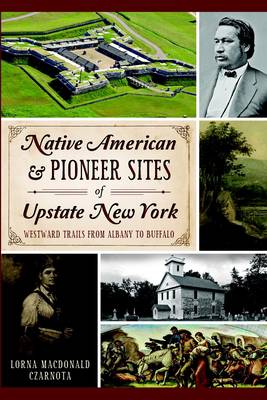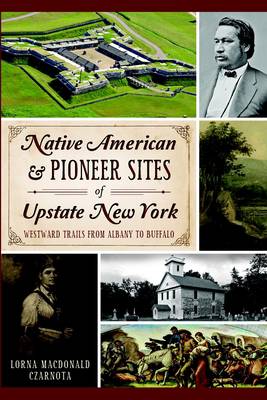
- Afhalen na 1 uur in een winkel met voorraad
- Gratis thuislevering in België vanaf € 30
- Ruim aanbod met 7 miljoen producten
- Afhalen na 1 uur in een winkel met voorraad
- Gratis thuislevering in België vanaf € 30
- Ruim aanbod met 7 miljoen producten
Zoeken
Native American & Pioneer Sites of Upstate New York
Westward Trails from Albany to Buffalo
Lorna MacDonald Czarnota
Paperback | Engels
€ 30,95
+ 61 punten
Omschrijving
Prior to the Revolutionary War, everything west of Albany was wilderness. Safer travel and the promise of land opened this frontier. The interaction between European settlers and Native Americans transformed New York, and the paths they walked still bear the footprints of their experiences, like the shrine to Kateri Tekakwitha in Fonda. Industry and invention flourished along these routes, as peace sparked imagination, allowing for art and the freedom to explore new ideologies, some inspired by Native American culture. The Latter Rain Movement took hold in the heart of the Burned-Over District. Utopian communities and playgrounds for the wealthy appeared and vanished; all that remains of the Oneida Community is its Mansion House. Follow New York's westward trails--the Erie Canal and Routes 5 and 20--that opened the west to the United States, beginning in Albany and moving westward to Buffalo.
Specificaties
Betrokkenen
- Auteur(s):
- Uitgeverij:
Inhoud
- Aantal bladzijden:
- 176
- Taal:
- Engels
Eigenschappen
- Productcode (EAN):
- 9781626192904
- Verschijningsdatum:
- 8/04/2014
- Uitvoering:
- Paperback
- Formaat:
- Trade paperback (VS)
- Afmetingen:
- 152 mm x 226 mm
- Gewicht:
- 294 g

Alleen bij Standaard Boekhandel
+ 61 punten op je klantenkaart van Standaard Boekhandel
Beoordelingen
We publiceren alleen reviews die voldoen aan de voorwaarden voor reviews. Bekijk onze voorwaarden voor reviews.








